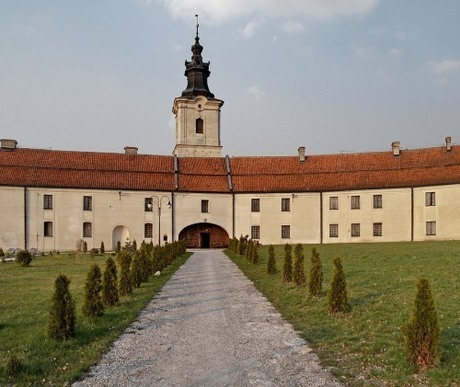Museum of Archaeology and Ethnography
Established in 1931 and one of the leading research institutions of its kind in the country, this charming little museum is packed with intricately carved swords and muskets, archaeological finds from Palaeolithic Poland including flint axes, pots and the customary skeleton in a glass case, charming models of river settlements from the 3rd century, recreations of 19th-century peasant houses and a peculiar exhibit dedicated to the history of money in Poland displayed in a pretend bank. If the idea of being followed by the staff doesn't worry you in the least then this museum can't come recommended highly enough. Of particular note, and easily missed, is the small, temporary collection of puppets from Polish animated films in a series of glass cabinets opposite the toilets on the ground floor.
Organized into three divisions (archaeology, ethnography, and numismatics), the Museum of Archaeology and Ethnography is one of the premier research institutions in Poland for the study of the past and traditional present. The Museum conducts archaeological research on prehistoric and early historic sites from the Stone Age to Medieval times, including major research at the Neolithic sites of Brzesc Kujawski and Oslonki with international collaboration. The ethnographic division focuses on the traditional communities of central Poland, while the numismatic division has extraordinary collections of ancient European coinage.
Many members of the staff of the Museum of Archaeology and Ethnography are internationally-known scholars who have published in various professional journals, both in Poland and abroad. Many hold advanced degrees. In addition, the Museum maintains a laboratory for the conservation of artifacts and operates one of two radiocarbon dating laboratories in Poland. The Museum's library is an important research and teaching archive. Numerous permanent and temporary exhibits interpret archaeology, ethnography, and coinage for the public. Located on a major public square, the Museum plays a significant role in the cultural life of the city of Lodz.
The Museum of Archaeology and Ethnography was established in 1931 in Lodz, the second-largest city of Poland (current population: 950,000). In 1945, Prof. Konrad Jazdzewski (1908-1985), one of the most significant figures in the history of Polish archaeology, assumed its directorship. Jazdzewski was succeeded in 1978 by doc. dr hab. Andrzej Mikolajczyk, who headed the museum until his death in 1991, whereupon he was succeeded by doc. dr hab. Ryszard Grygiel.
The Museum of Archaeology and Ethnography publishes a scholarly journal, Prace i Materialy Muzeum Archeologicznego i Etnograficznego, which appears in three series: archaeology, ethnography, and numismatics. In addition, it publishes a monograph series, Biblioteka Muzeum Archeologicznego i Etnograficznego w Lodzi.



